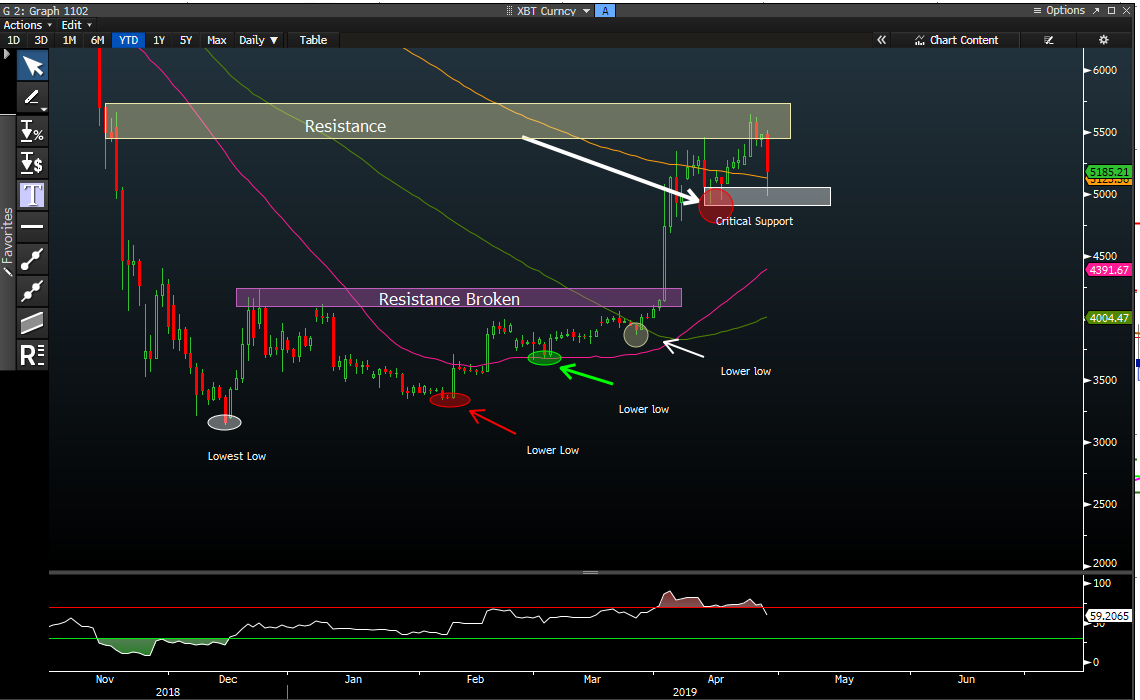Simple strategies are best most of the time. We look at this particular and easy strategy and the backtest shows a good return
Bitcoin price has started to tumble once again, thanks to another scam performed by Tether. We are seeing an intensive sell-off today and the crypto king is down nearly 5 and a half percent or $300 approximately. Do we need to worry about this?
Well, looking at the daily chart it appears that the price is in a constant battle with the 200-day moving average. Since April 4, we have seen several attempts where the big comprise tried to stay above this critical average. The recent sell-off pushed the price below this average and if we close below this it would send a bearish signal. Having said this, the game isn't over yet for the bulls. The reason that I am saying this is because the price is trading well above the 50 and 100 day moving averages. As long as the price stays above them, we have a strong hope for the bull rally to continue and the price can target the $6,000 to $6,500 mark.

So the question is what is the best strategy for active traders?
It is always best to keep things simple. For this particular reason, I am focusing on a simple moving average. On a 60-minute time frame, the 210-day moving average has worked pretty well. The strategy is: open a long position when the price crosses above the 200-day moving average, and close the long position and open a short position when the price crosses below this moving average. In order to factor in the slippage and brokerage commissions, the long and short trades only open on the next candle after the price crosses above or below the moving average.
There were several important factors for me to consider before I selected this moving average. The factors that I paid the most amount of attention are: percentage of winning trades, percentage of losing trades, profit factor, and percentage of maximum drawdown. The 210-day moving average has the lowest maximum drawdown percentage. The purpose is to keep this number as low as possible. This is because a bigger number opens the portfolio to a major risk.
To make the strategy more robust, I performed the backtest over a period of one year from April 2018 to April 2019. During this period there were 141 trades, 25 winning and 116 losing trades. I had 15 winning trades on the long side and 10 winning trades on the short side. Similarly, there were 55 losing trade on the long side and 61 losing trades on the short side. An important element which needs attention is that the strategy has generated over 100 percent return despite the fact that I had over 82 percent of losing trades. The percentage of losing trades was 82.27 while the percentage of winning trades was 17.73. This gave us a profit factor of 1.83.
In other words, the reason that this strategy performance was over 101.3 percent is mainly that the average win on the long side is $7.12K while the average loss on the long side is $1.18K. Similarly, the average rain on the short side set at $11.73K while the average loss on the short side is only $947.
In summary, the 210-SMA has an extremely good track record and it is worth looking if one is interested in active trading.
Back